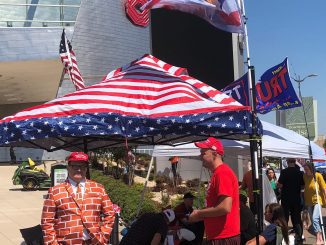As the 100th anniversary of the Tulsa Race Massacre was observed from May 31 to June 1, I spent part of Memorial Day watching the PBS documentary: “Tulsa: The Fire and the Forgotten.” Like many Americans, I am learning more about this gruesome Oklahoma tragedy. Many younger adults who are fans of the popular HBO horror drama “Lovecraft Country” were introduced to this grim history of the mass slaughter in Tulsa’s Greenwood district while watching the season one episode “Rewind 1921.”
The fact that young people gained knowledge about the Tulsa killings through pop culture reminded me of how I learned about the 1923 Rosewood massacre in Florida by viewing the film bearing its name in 1997. Both the Rosewood and Tulsa Greenwood tragedies were instigated by a false accusation of a Black man sexually assaulting a White woman. In the Greenwood case, it was a young Black teenager, and the Rosewood claim was a fabrication. The end was horrifically the same, with both towns burned as Black people were mercilessly slain by White mobs. Rosewood and the Greenwood township were also prosperous Black settlements that thrived economically despite racial oppression and segregation.
I was a young Ohio State graduate student when I watched “Rosewood,” and I had the same question then that many have today learning about the Tulsa carnage: Why were these events omitted from American history books? One primary answer is that the news media stopped reporting on the murder and terror that occurred in both of these Black communities once the violence began to subside. Many decades later, however, investigative reporting of journalists would bring the horrific truth of these atrocities to the forefront of the nation’s conscience. Writing for the St. Petersburg Times in the early 1980s, Gary Moore published several articles on Rosewood, and more recently, the work of Washington Post reporter DeNeen L. Brown has revived the buried stories of Tulsa.
Brown is featured in “Tulsa: The Fire and the Forgotten,” and her passionate storytelling provides viewers with an intimate view of what happened to Black Greenwood residents and how their descendants are presently fighting for reparations and justice. One part of the documentary that especially resonated with me was how the Vernon A.M.E. Church was, and still is, a solid foundation of Tulsa’s African American community. Many fled to the building’s basement while Greenwood was being burned. The White mob eventually set Vernon A.M.E. on fire, but the basement and the Black families in it miraculously survived. They still showed up for service the next Sunday morning after their town was nothing but rubble. I can only imagine that they had Job-like determination to still worship God with a “though you slay me, yet will I trust you” mentality after losing everything. Learning about what they lost is particularly painful because generational wealth was also viciously destroyed.
Greenwood was famously dubbed “Black Wall Street” by prominent sociologist W.E.B. DuBois, and business was literally booming there. Oklahoma Policy Institute records show that Greenwood’s business district had two schools named for Paul Laurence Dunbar and Booker T. Washington respectively, a bank, a public library and two newspapers and movie theaters. Greenwood survivors were maliciously denied compensation for the loss of their homes and businesses as a grand jury of all White men blamed them for the violence. The “Fire and the Forgotten” points out the harsh repercussions of that decision remain evident today. Many African Americans who live in North Tulsa, which is one of the country’s most segregated areas, are struggling to overcome social disparities of poverty, crime and high unemployment.
Toward the end of the film, Brown poignantly states that she hopes brutality like this will never happen again as Tulsa reckons with the death and devastation that ravaged Greenwood a century later. In reflecting on Greenwood and Rosewood, it’s really difficult to fathom how people could let the sin of racism infiltrate and darken their hearts to commit such murderous acts. Yet, I believe those courageous Vernon A.M.E. souls who went to church praising God after the Greenwood massacre would tell us not to lose faith. The fires destroyed their property and possessions but not their spirit. And we must hold on to this divine spirit of resiliency to ensure a better future.
Dr. Jessica A. Johnson is a lecturer in the English department at Ohio State University’s Lima campus.



